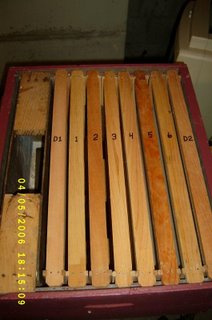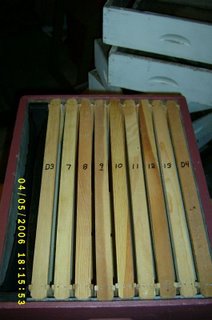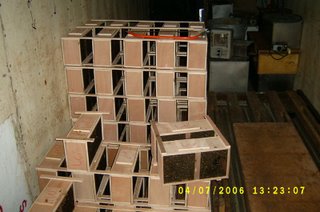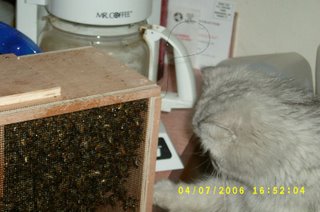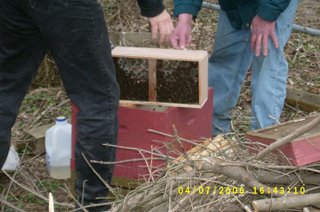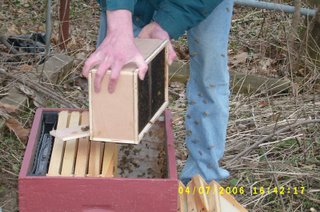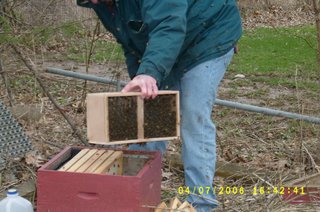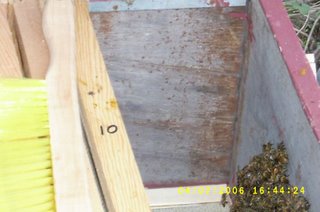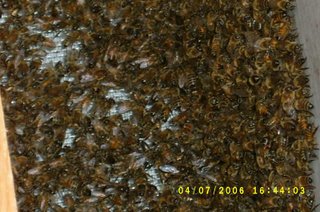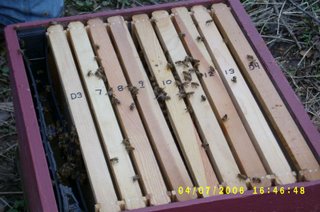Really, really good news!
Click images for larger views.
List of things to do today.- Cross fingers.
- Find brood in the hives, proving that we have laying queens.
- Dust with powdered sugar to knock down Varroa mites. (If any)
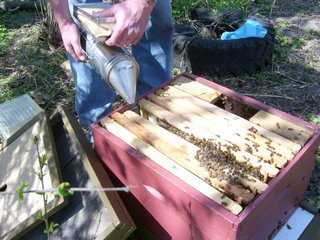 I started with "Bravo" hive which is the strongest. That would put the best news first.
I started with "Bravo" hive which is the strongest. That would put the best news first.This image didn't capture smoke, but it's there. Before anyone yells that the smoker shouldn't be tilted forward like that: There's a tall tight roll of cardboard inside. Little chance of hot cinders blowing out.
 Moment of truth. Do we have sealed brood? That takes 9 days from the time the egg is laid. It's been 13 days.
Moment of truth. Do we have sealed brood? That takes 9 days from the time the egg is laid. It's been 13 days.Bingo! The solid yellow area is sealed brood.
Just then an old car smashed into a tree. I was too happy to notice, and the bees didn't mind either.

A flat on look at the sealed cells. Happy days!
These frames are getting heavy!
Puffing everyone with a light dusting of powdered sugar. 10X confectioners sugar to be exact. I'm using a home made Varroa Blaster.

I made 2 modifications.
- Since I don't wear nylons anymore, I found some material with lots of tiny holes. It's blue.
- There's a 3 inch long 3/8" bolt inside. It agitates the sugar nicely when shaken. Ok, the truth. I was using it to push the sugar through the funnel and dropped it. A marble or something might be a good idea. Thanks, Bee Wrangler!
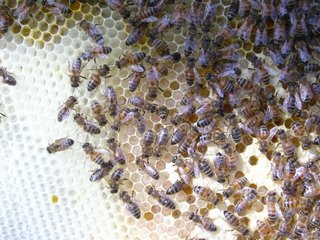 And now to Alpha hive. Let's cut to the chase. This is the picture. If you aren't a beekeeper, it's bugs. If you are, it's porn.
And now to Alpha hive. Let's cut to the chase. This is the picture. If you aren't a beekeeper, it's bugs. If you are, it's porn.See the single servings of shrimp cocktail? Those are bee larvae. They are floating in food provided by glands in the bodies of the nurse bees. When they graduate to pupae they will be sealed in and emerge as new bees on day 21. The flat parts in the picture are sealed brood.
 I think this is the other side of the same frame. The focus is not as perfect, and it's further away.
I think this is the other side of the same frame. The focus is not as perfect, and it's further away.When I use Gimp to really zoom in, I swear that I can see a tiny pair of black eyes peering out from one of the cells.
That's it for today from happy me. Tune in next time. Bee nice to Mother Nature.







